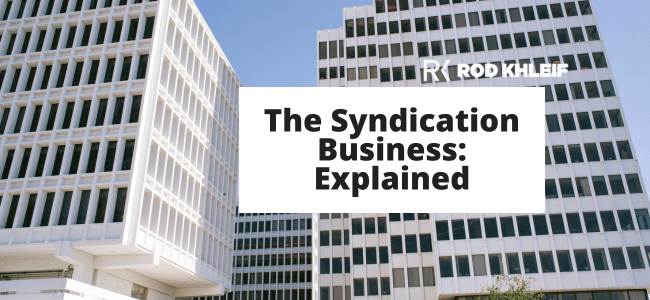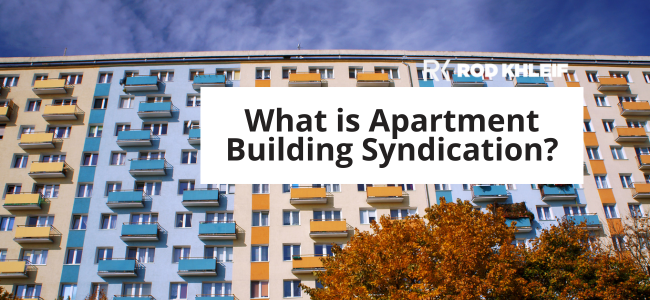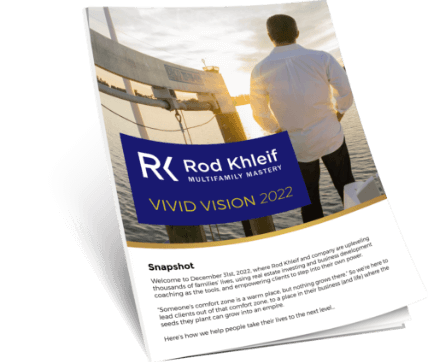If you’ve ever wondered, “Is multifamily considered commercial or residential?” you’re not alone. It’s one of the most important questions beginner investors ask and the answer directly impacts how you buy, finance, manage, and scale your real estate portfolio.
Let’s break it down, so you can understand the differences, the advantages, and how to use this knowledge to build wealth through multifamily real estate.
What Counts as Residential vs. Commercial Real Estate?
Here’s the industry-standard distinction:
-
Residential properties = 1 to 4 units (single-family homes, duplexes, triplexes, fourplexes)
-
Commercial properties = 5 or more units (fiveplexes, mid-sized apartment buildings, large multifamily communities)
It doesn’t matter whether it’s families, students, or retirees living in the building. The only important thing is how many separate rental units the property contains.
So if you’re asking, “Is multifamily considered commercial?” the answer is clear: Yes, but only once the property has five or more units, it is classified as commercial real estate.
And that classification comes with some major implications.
Why This Classification Matters to You as an Investor
The second a property crosses the 5-unit threshold, it no longer plays by residential rules. Everything from financing to valuation to property management is handled differently. And for serious investors, that’s a good thing.
Understanding the difference between commercial and residential multifamily will help you:
-
Structure better deals
-
Access more sophisticated financing
-
Control your property’s value through income
-
Scale your portfolio more efficiently
-
Attract capital and partners more easily
Let’s dive into the core differences—and how they affect your investment strategy.
Residential vs Commercial Multifamily

1. Financing: Commercial Deals Are All About the Property
Residential real estate loans (for properties with 1–4 units) are underwritten based on your personal income, credit history, and debt-to-income ratio. In other words, the lender is focused on you.
But once you move into commercial multifamily (5+ units), the underwriting shifts. Lenders evaluate the property’s performance, not your W-2 income.
They’ll look at:
-
Net Operating Income (NOI)
-
Debt Service Coverage Ratio (DSCR)
-
Market rents and occupancy
-
Property condition and location
-
Economic trends in the submarket
This is a huge advantage. If you’ve reached your personal borrowing limits or don’t have a high salaried job, commercial real estate still gives you room to scale—because the income from the asset is what secures the loan.
Bonus: Many lenders also offer non-recourse loans for larger commercial properties, which can protect your personal assets if the deal goes south.
2. Valuation: Residential Looks at Comps, Commercial Looks at Income
Another major difference is how the properties are valued.
-
Residential multifamily (1–4 units) is appraised based on comparable sales in the area—what similar homes recently sold for.
-
Commercial multifamily (5+ units) is valued based on income performance—primarily the Net Operating Income and the cap rate in that market.
This means that if you buy a 20-unit property and increase the rent by $150 per unit, you’re not just boosting monthly cash flow—you’re increasing the actual value of the asset.
You can force appreciation by:
-
Raising rents to market levels
-
Improving tenant retention
-
Reducing expenses
-
Implementing better property management
This level of control is what makes commercial multifamily such a powerful wealth-building tool.

The above chart is based on a simplified but valid model used in commercial real estate underwriting. Let me walk you through how it was calculated and why it works:
Assumptions Used:
-
10 units total
-
Rents increase from $900 to $1200 per unit/month
-
Cap rate: 6%
-
NOI = Gross Rental Income (we assumed no expenses here to isolate how rent alone affects valuation)
The Formula Behind It:
Annual Gross Income (per rent level) = Rent × Units × 12
NOI (simplified) = Annual Gross Income
Property Value = NOI / Cap Rate
For example:
-
$900/month × 10 units × 12 months = $108,000 NOI
-
$108,000 ÷ 0.06 = $1.8M valuation
At $1,200/month:
-
NOI = $144,000
-
$144,000 ÷ 0.06 = $2.4M valuation
So a $300/month rent increase per unit boosts value by $600,000.
Why This Chart Works
This model is commonly used to demonstrate how rent increases or operational improvements create forced appreciation in multifamily properties, which is something you can’t do with single family homes.
What’s Missing (By Design):
To keep the visual simple, I’ve excluded operating expenses. In a real deal, you’d subtract expenses from income to get NOI. But this model still accurately shows how rental income affects value in concept, especially for teaching purposes.
3. Management, Loan Terms, and Exit Strategy
Let’s talk operations.
Managing a duplex? You could handle it yourself. Managing a 20-unit property? You’ll likely need a property management company, onsite staff, and professional systems.
Also consider:
-
Loan terms: Commercial loans often have 5-, 7-, or 10-year terms with amortizations over 20–30 years, while residential loans often come with fixed 30-year terms.
-
Balloon payments: Many commercial loans include a balloon at maturity, requiring a refinance or sale.
-
Interest-only periods: These are more common in commercial lending and can improve cash flow early in the investment.
-
Exit flexibility: Since commercial value is based on income, improving operations gives you more control over your exit price—especially if cap rates hold steady.
You’re no longer just a landlord—you’re operating a business.
4. Scalability: Bigger Doors, Bigger Opportunities
Scaling a residential portfolio means buying one duplex at a time—and hitting lending ceilings quickly.
But with commercial multifamily, your growth accelerates. You can buy a 20-, 50-, or 100-unit property and grow your unit count exponentially without multiplying the number of individual transactions.
You also position yourself to:
-
Attract equity partners and investors
-
Participate in syndications or raise capital
-
Leverage economies of scale for maintenance, marketing, and staffing
-
Get access to more favorable institutional lending programs
In short, moving into commercial multifamily is how you go from being a landlord to becoming a serious real estate investor.
Quick Summary: Is Multifamily Commercial or Residential?

Bottom line: Anything with five or more units is multifamily commercial real estate—and that shift unlocks an entirely new world of investment strategies and potential.
Final Thoughts from Rod
I started in single-family and built a large portfolio. But when the 2008 crash hit, I learned the hard way that scale, structure, and income-focused investing were the keys to long-term success.
That’s why I shifted into commercial multifamily—and I’ve never looked back.
So if you’re asking, “Is multifamily commercial or residential?”, know this: if you want to grow your wealth, attract partners, and build a legacy, commercial multifamily is where the real leverage begins.
It’s not just about owning more doors. It’s about owning smarter.
Let’s build Lifetime Cashflow!
— Rod












